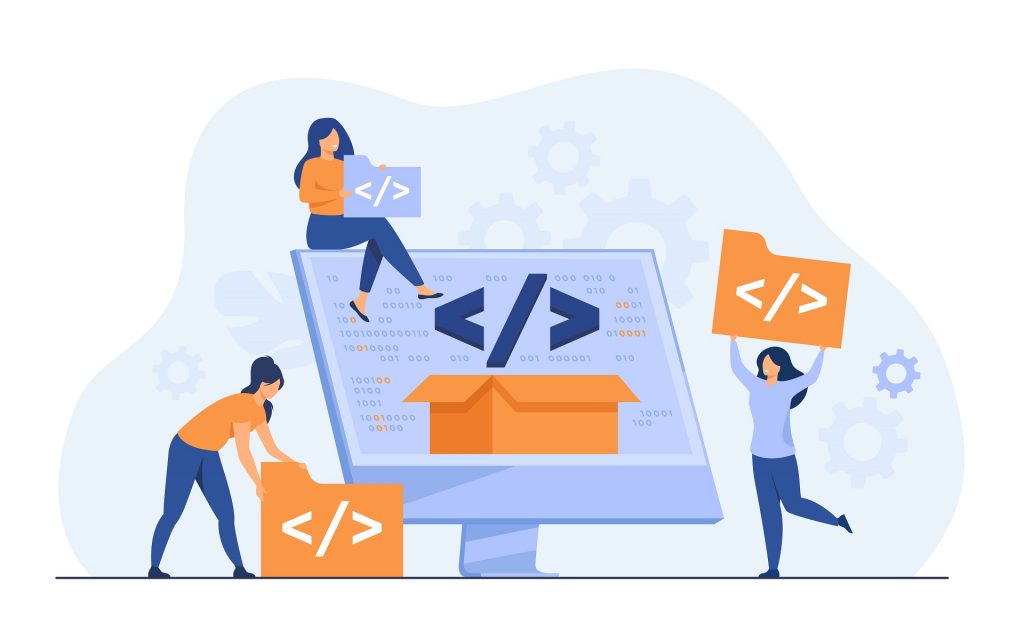All websites require front-end and backend two main specialization areas within web development. Front-end development deals with the visual aspects of a website – the part that users see and interrelate with. Back-end development includes a site’s structure, system, data, and logic. Together, front-end and backend development intermingle to create interactive, and functional websites. While both emphasize how a website works and both have an equal share of differences in terms of functionality. The Front-end discusses the client side, whereas the backend discusses the server side of the application. Both are essential to web development, but both have different roles, responsibilities, and environments they worked in. There are four main differences that front-end and back-end web developers feel.
Read about best front-end frameworks.
Both work on different sides of websites:
Front-end web development is programming that concentrates on the pictorial elements of a website or app that a user will interrelate with. Meanwhile, back-end development emphasizes the side of the website users can’t see. They work together to create an active website to let users make purchases, use contact forms, and do any other cooperating activities you might participate in while browsing a site. Some examples of these types of websites are Netflix, PayPal, Facebook, and the Kenzie Academy site.
Both use different programming languages:
When you are coding anything all you can see is the use of programming language. Same as human languages, these programming languages work with computers by a series of symbols. It is like giving instructions to any computer while working on a website. Both front-end and back-end frameworks use different programming languages as their functional support. The front-end developers use JavaScript a language used to make sites interactive and fun, HTML for creating web pages, and CSS used to bring style and flair. While back-end developers use Python, a general-purpose coding language, Java, Ruby, and PHP, a server-side scripting language.
Know more about the best backend frameworks.
Both use different frameworks and libraries:
As both use different programming languages, both have different frameworks and libraries. The front-end developers use jQuery, AngularJS, SASS, Bootstrap, and EmberJS. While back-end developers use Django, Laravel, Spring, Zend, Symfony, and CakePHP.
The difference in coding skills:
Both front-end and back-end frameworks are different in skills. Some think the front-end is easy to learn while some think the backend is easy to learn. But somehow it is the front-end that seems to be easier than the backend because front-end developers need strong coding skills while the back-end developers need more advance and technical expertise. And the back-end framework remains in high demand due to its technical expertise.
Both are different in working:
If you want to learn web development and you are confused about whether to choose a front-end or back-end framework. It is important to focus on the day-to-day tasks of each framework. If you are working with visual designs and creating a first-class user experience, then you will probably like working in the front-end framework. And if it is working with data, figuring out algorithms, and optimizing a complex system, you might like working with a back-end framework.
Both have different payments:
As both are different for different websites, there is also a difference in pay. The average annual salary of front-end developer is $76,929 while the average salary of backend developer is $101.619. That depends on the web developer whether he is specialized in front-end development or back-end development. It all depends on one’s unique talent, passion, and abilities. It solely depends on the web developer to focus on which one is more beneficial and brings satisfaction as a web framework rather than focus on salary only.
Both have different strengths:
Different web developers have different strengths. But it’s important to keep in mind that one side of the development process isn’t tougher or more important than another. They’re equally important in generating a dope website that users will enjoy interrelating with, same with the case of front-end and back-end frameworks both are equally important and have different strengths while working for a website.
Conclusion:
So, both front-end and backend are different frameworks in terms of their language, libraries, and strengths. As well as both carry out different activities in practical terms the front-end means the browser and the backend means the server.




